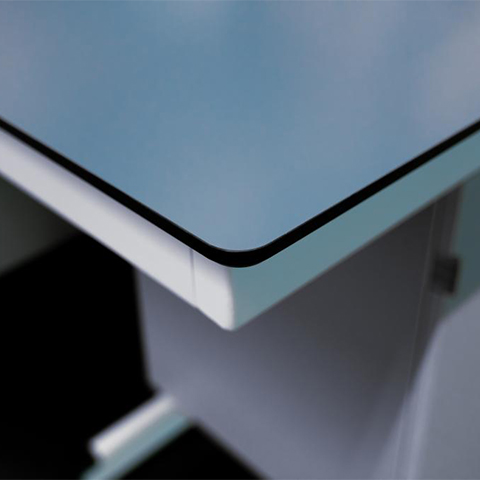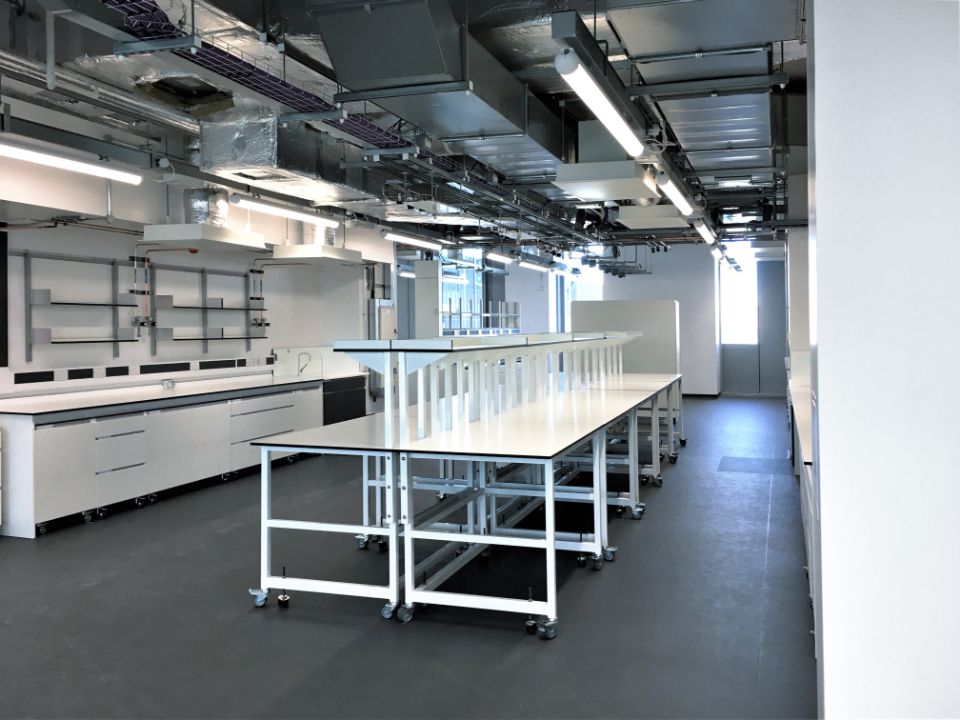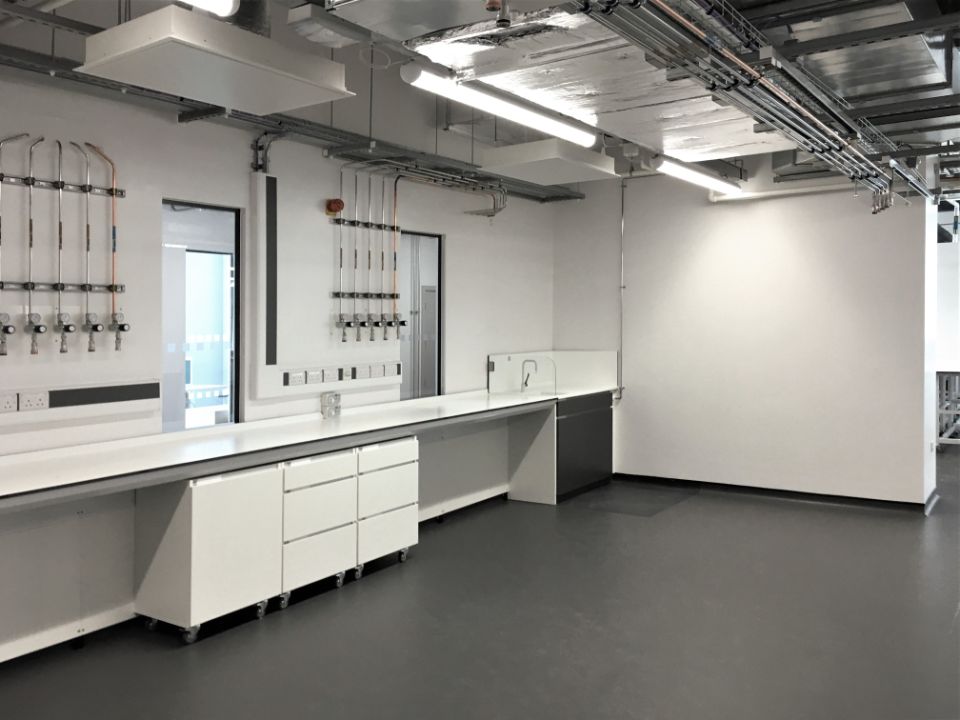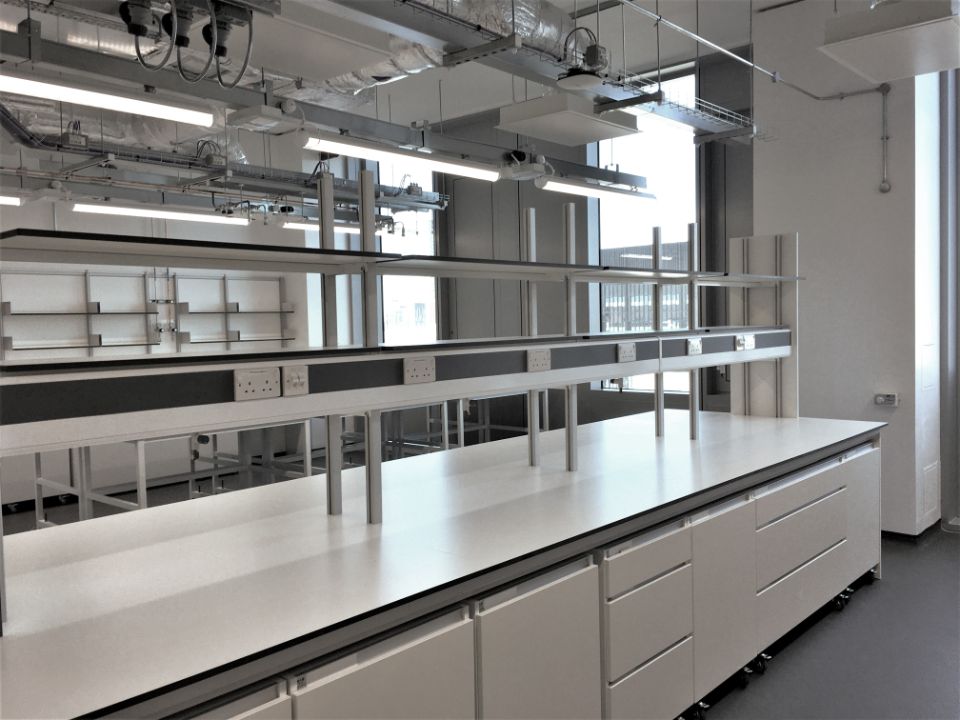Manchester University




HENRY ROYCE INSTITUTE UNIVERSITY OF MANCHESTER
AS THE UK’S LEADING ORGANISATION FOR ADVANCED MATERIALS RESEARCH AND INNOVATION, THE HENRY ROYCE INSTITUTE PLAYS A PIVOTAL ROLE IN THE COUNTRY’S AMBITIONS TO DEVELOP GROUNDBREAKING MATERIALS AND TECHNOLOGIES, WHILE FOSTERING IN PARALLEL SUSTAINABLE GROWTH AND DEVELOPMENT. ITS PURPOSE IS TO PROVIDE INDUSTRY LARGE AND SMALL AS WELL AS ACADEMIA WITH THE CAPABILITY TO DEVELOP, MAKE, TEST AND CHARACTERISE INNOVATIVE PRODUCTS, COMPONENTS AND SYSTEMS. TO THIS EFFECT, IT PROVIDES EASY ACCESS TO STATE-OF-THE-ART EQUIPMENT WORTH MORE THAN £150M (175M EUROS) AND TO A HIGHLY TRAINED SUPPORT TEAM.
The Henry Royce Institute, known to many simply as ‘Royce’, operates from its brand new building at the University of Manchester and works in close coordination with eight additional, leading institutions across the UK – the Universities of Cambridge, Leeds, Liverpool, Oxford and Sheffield, the Imperial College London, the National Nuclear Laboratory and UKAEA (UK Atomic Energy Authority) – as well as Associate Partner, the University of Cranfield. All in all, Royce coordinates over £300m (350m Euros) of facilities, making it one of the global leaders in material science: it was at the University of Manchester, just a stone’s throw away from the new Hub, that graphene – a game-changing, carbon based supermaterial 200 times stronger than steel – was discovered for the first time.
UNUSUALLY DEMANDING LAB ENVIRONMENTS
For Dr. Daniel Tate, Technical Project Manager at Royce, the exceptional diversity of materials and technologies is one of the defining characteristics of the Henry Royce Institute: “The spectrum ranges from nuclear materials to polymers to sustainable biobased compounds, and the labs are equipped with devices and machinery that go from 3D printers to 3.50m tall, free-standing load frames”. He continues: “Another defining feature is the sheer size of the new Hub – it has labs on nine floors, totalling 5,000m², and ultimately, 650 people will be working there”. “As the person in charge of managing the installation and the services – including power, water and gases – I can fully understand why Trespa® TopLab® PLUS has been used for all worktops throughout the building, even if the decision predates my joining the Institute: Trespa worktops ideally meet the requirementsfor all the applications and technologies I mentioned. HPL (High Pressure Laminate) is extremely stable in several respects: it can take a lot of mechanical stress and withstand, depending on the process or test to be performed, a rather harsh environment. It is also chemically stable across the board, which makes it highly versatile. This is all the more important since the processes and the technical requirements vary widely. In addition, the Hub works as an innovation accelerator for projects that can change with time. This is why flexibility is a crucial factor”.
In this respect, it is worth mentioning that Trespa’s proprietary EBC technology (Electron Beam Curing) imparts an exceptionally resistant finish to Trespa’s HPL (High Pressure laminate), a material already
very strong and durable in itself. As a result, Trespa® TopLab® PLUS meets highly demanding requirements for laboratory work surfaces. This includes resistance against a long list of aggressive chemicals as defined by the SEFA 3-2010 test protocols. Equally defining is the material’s high load-bearing capability – an important aspect at Royce, where some lab equipment can be heavy. Asked about possible alternatives, Daniel Tate answers: “In former times, we might have used hardwood for the worktops – for example teak,
which is dense and comparatively hardwearing – but in a new high-end lab, this was obviously off the table. Here, definitely, Trespa® TopLab® is an ideal fit”. Daniel Tate appreciates as well the ‘clean, consistent look” that contributes to the building’s clean-cut architecture: all TopLab® PLUS worktops and shelves, as well as the complementary lab furniture, share the same shade of white. The dark core of the TopLab® panel, which has been left visible on the edges of the worktops and shelves, adds a visual accent to the design.

A concept that showcases and mirrors the Institute’s ambitions
Krissi Dullehan is a Senior Associate and Project Architect at the London studio of NBBJ. The architecture and design practice was founded in 1943 in Seattle and remains headquartered in the US. Today, as a true global player in its field, it has offices around the world. Krissi Dullehan was in charge of coordination at the Royce, a project well in line with the studio’s focus on research, higher education and science: in the UK, the Henry Royce Institute is the 13th project of its kind to be designed by NBBJ.
She points out: “We have designed the shell and the core of the building, including all the labs. Royce is built around an atrium that is split into three interconnected stepping sections. These sections are open to each other: they define gathering points easily accessible from the various lab units located on the building’s nine floors”. The façades combine a striking linear pattern, defined by asymmetrical vertical panels, with a large number of floor-to-ceiling windows. “The idea is to offer ‘Science on show’ to those passing by Royce, which is located on one of the main routes into the city”, explains Krissi Dullehan. “Flexibility was essential, and we planned the laboratories accordingly. While the furniture design and the colour scheme are consistent throughout the building, the labs have to accommodate very different types of science – from nano printing to advanced material testing. In such a context, Trespa® Toplab® panels were our go-to material for the worktops, for cladding purposes and for parts of the joinery, including shelves, moveable benches and racks. We had used the product on many previous occasions, and we knew it was up to the task”.

Trespa worktops - the natural choice for laboratories across the UK
“For us, Trespa is in fact the standard ‘go-to solution’ for the majority of lab worktops”, adds Shaun Serridge, the Sales Director at S+B UK Ltd – the company which has manufactured all the lab furniture in use at Royce. “Clearly, if it’s a lab worktop, Trespa® Toplab® is more likely to be used than any other material”.
S+B has won a Queen’s Award for Enterprise International Trade and belongs to the leading and longest established specialists for laboratory furniture, associated products and related services in Great Britain. Furniture for learning environments is another field of expertise, with over 40 years of specific experience. In the UK market for laboratory furniture, S+B is, in Shaun Serridge’s words, “Trespa’s largest and oldest customer” – offering its own standard modular systems as well as entirely bespoke solutions.
S+B has been supplying the University of Manchester with a variety of products for many years. The company – which in addition to its industry-leading know-how is ideally located only five miles from the campus – has been involved in 15 different projects so far, including the National Graphene Institute, which was completed in 2015.
Shaun Serridge underscores: “We have used products from the Trespa® TopLab® range in every single project at the University of Manchester! From time to time and depending on the project, we do use other materials for particular applications. However, it is fair to say that at least 90% of the time, TopLab® and TopLab® PLUS are the specified products in a classic lab environment”. He continues: “Due to their special finish, Trespa worktops and panels come with a sealed, especially hard-wearing surface. They are definitely outstanding allround performers”.
At Royce, the material was confronted with additional challenges. Shaun Serridge explains: “Each workstation consists of a heavy-duty steel construction. For maximum flexibility within a modular grid system, we designed a bespoke frame on wheels; it is topped with Trespa® TopLab® and designed to bear loads of up to 400kg. The HPL tops behave exactly as expected and we have had no issues. Very recently, we have used a similar configuration for a project in Dubai and again, everything worked perfectly”.

Trespa® TopLab®: preferred by British architects, and their clients
As Shaun Serridge points out, “…very often, Trespa is specified long before we get involved. There are some specifications out there that do not even indicate the material type – they simply say ‘Trespa’! At this point, what we need to find out is whether the architect means Trespa® TopLab® or TopLab® PLUS. In any case, every architect who designs labs and research facilities has known and appreciated Trespa products – and the material’s qualities – for many years”.
Krissi Dullehan of NBBJ goes even further: “In fact, the clients themselves want it to be a product from Trespa – this is just what they expect, and it is not uncommon to find ‘TopLab® written right into the investors’ documentation”.
She concludes: “For us as architects, Trespa® TopLab® is a material that is familiar and reliable: we know by experience that it will meet a science project’s criteria in terms of durability, stability and resistance in all kinds of situations. And at Royce as well, Trespa® Toplab® PLUS is performing exactly as it should”.

 EN/GB
EN/GB












